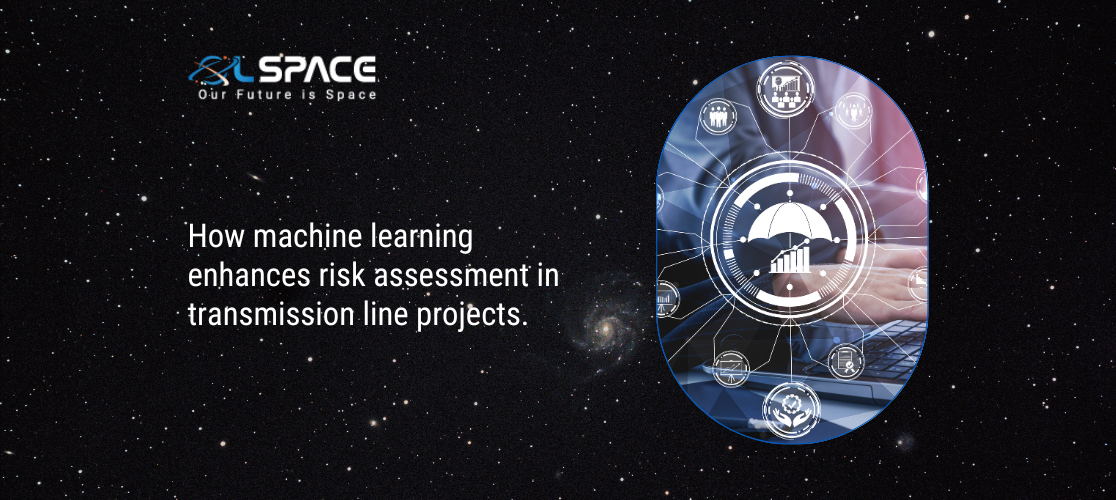19 December 2023
How machine learning enhances risk assessment in transmission line projects.

Transmission line projects are complex endeavors with inherent risks that can impact timelines, budgets, and overall project success. Leveraging machine learning (ML) in risk assessment for transmission line projects introduces a transformative approach that enhances decision-making and risk mitigation. This article explores the ways in which ML technologies contribute to more accurate, data-driven risk assessments in the planning, construction, and maintenance phases of transmission line projects.
1. Predictive Analytics for Site Selection:
Terrain Analysis: Machine learning algorithms analyse historical geospatial data to identify potential challenges in transmission line routes, considering factors such as topography, soil conditions, and environmental sensitivity.
Climate Modeling: ML models predict climate patterns, enabling proactive identification of areas prone to extreme weather events that could impact transmission line infrastructure.
2. Optimising Project Scheduling:
Historical Data Analysis: ML algorithms analyse historical project data, considering variables such as weather conditions, resource availability, and project timelines, to optimise scheduling and reduce delays.
Predictive Maintenance: ML-driven predictive maintenance models help schedule maintenance activities at optimal times, minimising disruptions to transmission line operations.
3. Cost Estimation and Budget Management:
Cost Predictions: ML models trained on historical project cost data assist in accurate cost estimations, enabling more realistic budget planning.
Resource Allocation Optimisation: Algorithms analyse resource usage patterns to optimise the allocation of labor, materials, and equipment, reducing the risk of cost overruns.
4. Early Detection of Construction Risks:
Image Recognition: ML algorithms process images from construction sites to detect potential risks, such as equipment malfunctions, unsafe working conditions, or deviations from the construction plan.
Real-time Monitoring: Integrating ML-powered sensors and cameras allows for real-time monitoring of construction activities, enabling immediate identification of issues that could lead to delays or safety concerns.
5. Supply Chain Optimisation:
Demand Forecasting: ML enhances supply chain management by predicting material demands based on project progress, reducing the risk of material shortages or excess inventory.
Vendor Performance Analysis: Algorithms analyse vendor performance data to identify reliable suppliers and mitigate risks associated with delays or quality issues.
6. Environmental Impact Assessment:
Natural Language Processing (NLP): ML-powered NLP tools analyse environmental impact reports, identifying potential risks related to regulatory compliance, ecological concerns, and community impact.
Continuous Monitoring: ML-driven sensors and satellite data provide real-time information on environmental conditions, helping identify emerging risks and ensuring ongoing compliance.
7. Safety Compliance Monitoring:
Wearable Technology Data: ML algorithms analyse data from wearable devices to monitor worker safety and compliance with safety protocols.
Behavioral Pattern Recognition: ML models identify patterns in worker behavior that may indicate a deviation from safety standards, allowing for timely intervention.
8. Geotechnical Risk Assessment:
Geotechnical Data Analysis: ML processes geotechnical data to assess soil stability, identify potential landslide risks, and inform foundation design decisions.
Sensor Integration: ML algorithms analyse data from sensors embedded in the ground to detect subtle shifts or changes in soil conditions that may pose a risk to transmission line structures.
9. Dynamic Risk Management:
Real-time Data Integration: ML technologies integrate real-time data from various sources, enabling dynamic risk assessments that can adapt to changing project conditions.
Scenario Analysis: ML models simulate different scenarios based on current and predicted data, allowing project managers to anticipate and mitigate risks before they escalate.
10. Continuous Learning and Improvement:
Feedback Loops: ML models in risk assessment continually learn from new data, incorporating insights from past projects and adapting to evolving project dynamics.
Iterative Optimisation: Continuous improvement of ML algorithms enhances the accuracy of risk assessments over time, ensuring that risk management strategies stay ahead of industry challenges.
Conclusion: Transforming Transmission Line Projects with Machine Learning
Machine learning brings a paradigm shift to risk assessment in transmission line projects, ushering in a new era of data-driven decision-making and proactive risk mitigation. By harnessing the power of predictive analytics, real-time monitoring, and continuous learning, ML technologies enhance project resilience, reduce uncertainties, and contribute to the successful and sustainable implementation of transmission line infrastructure. As the industry embraces these advancements, transmission line projects can navigate risks with greater confidence, ultimately leading to increased reliability, efficiency, and safety in power transmission networks.
